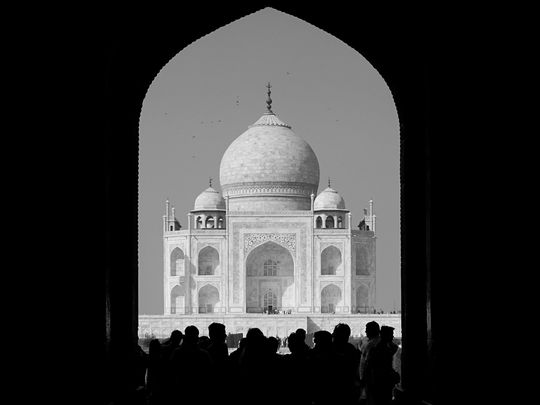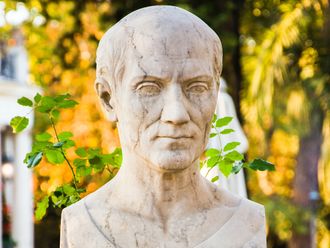
The Taj Mahal in Agra, India, is one of the most well-known symbols of love in the world. Yet, it holds many secrets.
Click start to play today’s Crossword, where you can spot this wonder of the world in one of the clues.
The Taj Mahal took 17 years to finally be completed, under the directive of the Mughal emperor Shah Jahan, who built it for his beloved queen Mumtaz, who passed away in childbirth. Centuries later, it still remains as one of India’s best known architectural marvels. But there are several facts about the Taj Mahal that few people are aware of. Here, we share some of the most interesting ones:
1. It’s not completely symmetrical
The Mughals prized symmetry, and it shows in this beautiful monument. The Taj Mahal is flanked by identical minarets, and two identical structures in red sandstone – a mosque and a guesthouse – lie equidistant from the mausoleum. From the vaulted arches to the facades and calligraphy inlaid onto marble – everything about it is symmetrical and harmonious. Ironically, there’s one spot in the Taj Mahal that’s incongruous, and it’s Shah Jahan’s tomb. Local legend has it that the emperor wanted to build a black Taj Mahal for himself, but he ran out of time, so his burial spot was almost an afterthought.
2. It gets facials
As Agra became a popular tourist spot, industrialisation and commerce in the city and surrounding areas boomed. However, it also led to the yellowing of the Taj Mahal’s marble façade. Eventually, India’s Supreme Court ruled that industries within the Taj Trapezium Zone – which extends to 10,400 square kilometres – must switch to natural gas or relocate. The Taj also received a beauty treatment similar to the ones that Indian women frequently use. Fuller’s earth or Multani mitti – a kind of cleansing mud pack – was layered onto the Taj and then washed off with water after 24 hours, to help bring back her sheen.
3. There were no amputated craftsmen
A popular myth states that Shah Jahan ordered the maiming and blinding of the chief artisans of the Taj Mahal, so that the mausoleum’s beauty could never be replicated. But historians have found little support for this theory. However, it has been documented that many workers suffered from deformities, possibly because of years of painstaking, back-breaking work. Many craftsmen who were responsible for the immaculate in-lay work also reportedly suffered from sight issues.
4. It was sold three times
Even though it’s a United Nations Educational, Scientific and Cultural Organisation (Unesco) heritage site, and a national monument, some gullible people were fooled into thinking it was up for sale. The notorious conman M. K. Srivastava (also known as Natwarlal) conned three trusting tourists into buying the Taj Mahal for a mere Rs100,000 (Dh4,140). Since he was a lawyer, he had official-looking sales deeds, along with fake government official IDs to complete his con. Natwarlal had over 100 cases against him and was arrested and imprisoned several times (he always managed to escape). In 1996, the conman, who was then 86 years old, was being transported from the prison to the hospital, when he made his final escape. He has never been spotted, since.
What do you think of these less known Taj Mahal facts? Play today’s Crossword and tell us at games@gulfnews.com.








